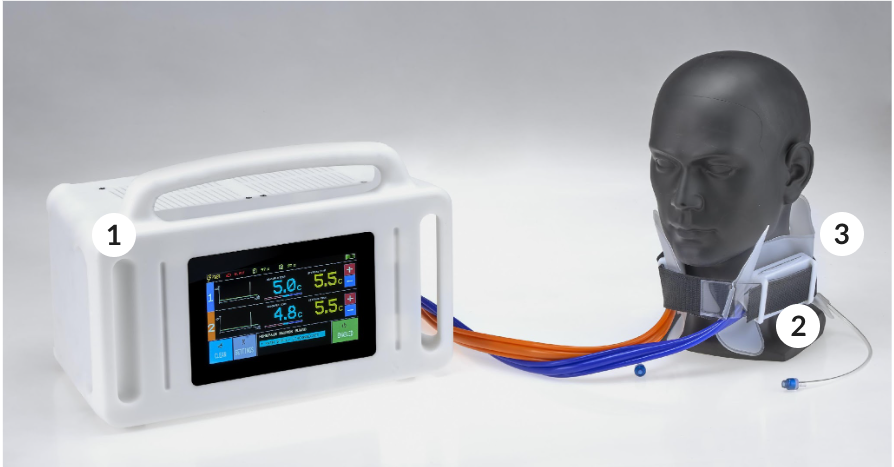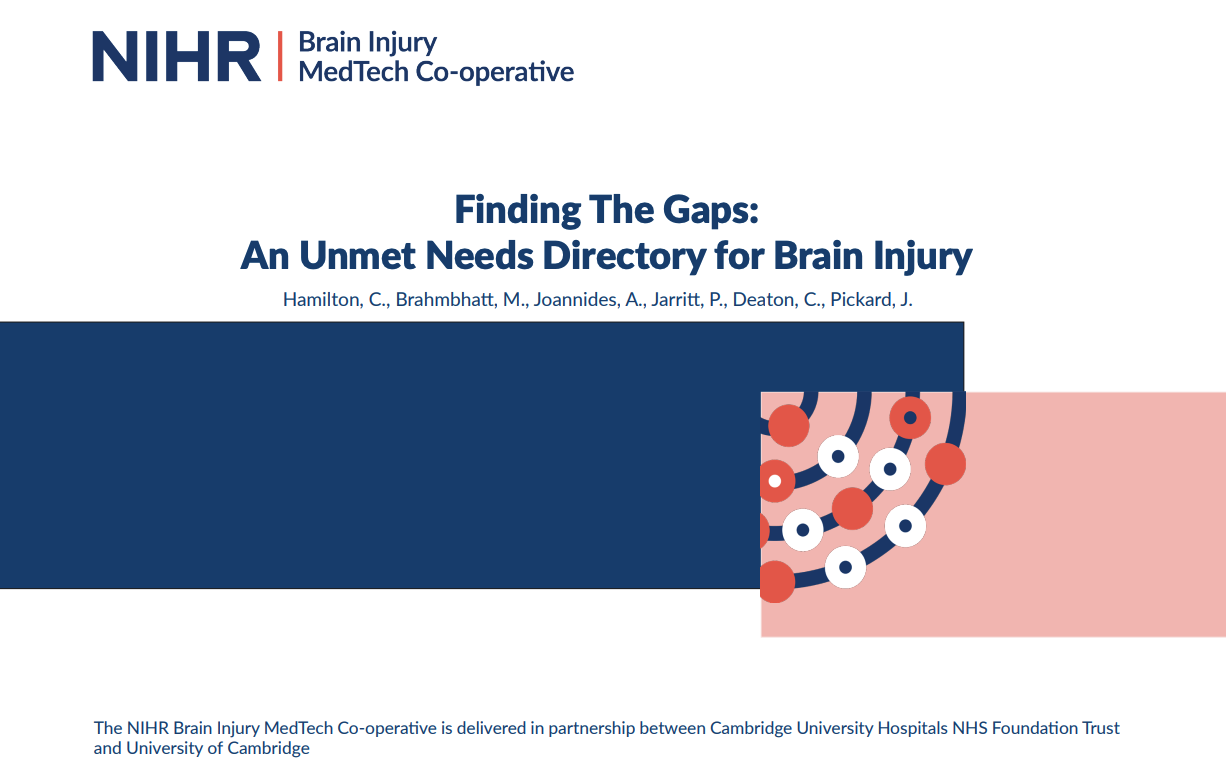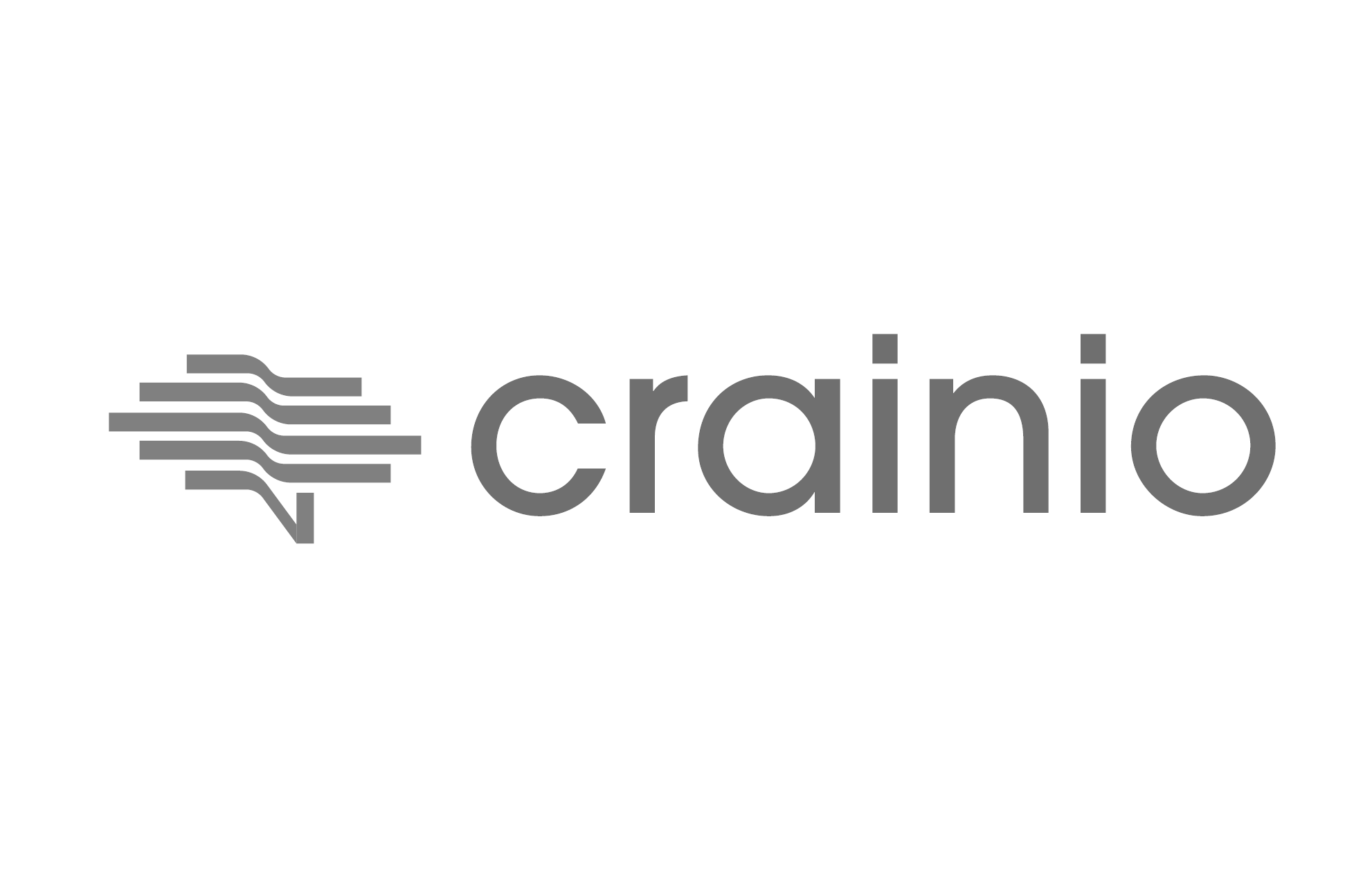Listen to James Piercy talk with Enrico Giuliani, Founder of NeuronGuard, and Andrea Lavinio, Clinical lead and Consultant in NeuroTrauma, about Aurora, a selective and portable cerebral targeted temperature management system, and their next study SELETHERM 2 (Selective Brain Temperature Management)
Often, following traumatic brain injury, an intensivist will induce hypothermia to reduce swelling in the brain. While this is good for preventing secondary brain injury, it compromises your immune system, which leaves you vulnerable to infection. Current medical devices used for cooling are big and not very portable. This means they are removed when patients are moved during their recovery, which means the brain will begin to swell again. NeuronGuard have developed a portable, non-invasive, selective cooling collar to solve these problems.
Click the button below to be taken to NeuronGuard’s website.

| (0:10) James | Welcome to another in this series of podcasts from the Brain Injury HealthTech Research Center. And today I'm talking to Andrea and Enrico from NeuronGuard about a new device which promises to change the way we manage brain injuries. Enrico, perhaps you can tell us a little bit about NeuronGuard, what do you do? |
| (0:29) Enrico | So we are a company that has developed a temperature management system to manage brain temperature and try to have as little impact as possible on body temperature. Because we know that the brain benefits from being colder, especially in a more critical situation while the rest of the body should stay at normal thermia. So that is kind of a technological challenge and in collaboration with the NCCU team and in particular with Dr. Lavinio, we've tried to come up with a solution that exploits the neck of the patient as a place to exchange heat in a non-invasive way and to make it as portable as possible so it can follow the patient within the hospital but also, hopefully, outside the hospital in ambulance rescue. |
| (1:29) James | So Andrea, I think what I'm getting for that is you want to cool the brain but not the rest of the body. Why is cooling the brain a good idea? Why would we want to do that? |
| (1:39) Andrea | So we do many things to protect the injured brain in the acute phase following trauma. We typically keep patients sedated and mechanically ventilated to ensure that brain swelling doesn't cause, what's referred to as, secondary brain damage. Which is, within the skull pressure builds up and blood flow to the brain becomes compromised to the point that you have a secondary loss of neurons. And obviously this correlates from the perspective of a patient that's been involved say in a road traffic accident. The fact that they may survive with more disability or die as a result of their injuries.
One of the measures that doctors and nurses put in place is to control temperature. That influences a number of physiological functions. One of them is the swelling of the brain itself. Fever can cause seizures which can dramatically increase intracranial pressure and cause the patient to die abruptly. But conversely reducing temperature makes every cell more resilient and resistant to a prolonged period of compromised perfusion. That is even if blood oxygen and glucose delivery is reduced with therapeutic hypothermia, which is a controlled reduction in temperature, rather than having neuron die, you have more time say to take the patient to a neurosurgical theatre or to put in place the other measures that we use to reduce swelling and the build-up of pressure and so we always control temperature in the acute phase following traumatic brain injury. |
| (3:44) James | Okay so I'm trying to understand this. So it's a bit like just when I get any sort of bruise right if I get a bruise on my hand I might put some ice on it and that will hopefully kind of reduce the swelling and you're trying to do the same thing the difference, of course, in the brain is that the bruise can't get bigger because it's stuck inside your head right? |
| (4:03) Andrea | That's exactly right! Obviously it would reduce the swelling but also we've known this for more than 50 years now with cardiac surgery. In the pioneering years of cardiac surgery to say to replace a valve you would have to stop the heart. But we discovered that by reducing their body temperature in the low 30s you could operate for an hour with no blood flow whatsoever and then when you restart the heart the patient wakes up often with no neurological compromise whatsoever. |
| (4:38) James | So is that low in temperature is that just slowing down the activity of the cells that they don't need to produce energy they work much more slowly? |
| (4:46) Andrea | Absolutely, absolutely. So you reduce the metabolic rate to such a level that even if you have a severe compromise in perfusion neurons do not die or die at a much lower rate than you would otherwise in a patient that's normothermic or worse that has a fever. And I had the privilege of working on a recent set of recommendations for temperature control following traumatic brain injury, and it is absolutely recognized that this is a key variable. But we would use control normothermia for the vast majority of patients in the first tier of intracranial pressure control. And then reserve hypothermia for patients for whom the sort of basic maneuvers to control ICP are not effective. And why is that? Why don't we use therapeutic hypothermia more broadly to the whole host of patients that come to under our care with traumatic brain injury? Well, the reason is that there are side effects. These are often quite significant and especially in patients that are treated with therapeutic hypothermia can alter adversely their clinical course. |
| (6:10) James | Just to kind of clarify the picture before we hear a bit more about how this device works, how do we cool people at the moment? Do we put them in ice baths? Is it a kind of electronic cooling system? How do we cool them? |
| (6:21) Andrea | Excellent question. So the standard practice at this stage is that we would monitor temperature with the core thermometer which is typically placed in our case in the esophagus. And in patients that develop fever, we would apply an automated device, which is the size of a small fridge, which sits at the bedside and it's connected to large pads that are applied to the trunk and the thighs. This device is then driven by an automated feedback, it senses the temperature of the patient, and it cools the pads or warms the pads to keep the patient within the preset temperature range. |
| (7:07) James | So what you're doing you're cooling the outside of the body so the blood is going to draw itself naturally in. It must take quite a long time to get the real core temperature down to those really low temperatures. |
| (7:19) Andrea | That's a fantastic observation. It does! I mean the device that we're using, actually it performs quite well. There are other devices that are even faster and that consists of an intravascular device like a central venous catheter. It has a bladder that sort of fills up with the fluid which can be essentially cooled at freezing temperature, and those devices are very fast once they are in place. But obviously there's the time required to find a doctor to place a central venous catheter and inflate it. And also that if you imagine having a popsicle in your in one of your large veins, in the groin typically, it's problematic in that clot formation is quite common on these things. So our preference is to use a surface cooling device and to maintain temperature within a very reasonably narrow range, approximately of half a degree centigrade.
As you recognized, if you have someone who has an intracranial pressure emergency, someone (a kid) comes in having crashed their motorcycle. So one of the things we do is to drop their temperature. So we apply the pads but also we keep in our fridge some ice cold saline, and if you have a litre or two of pretty much ice cold intravenous fluids with electrolytes, and you infuse them very quickly. Obviously that's not a very sophisticated way to control temperature, but it's a very sophisticated way to induce hypothermia in someone who is at immediate risk of life. And so we would do that and apply the pads. And the combination of these you get a big dump in temperature and then you control it within a narrow range. |
| (9:21) James | Enrico, I wonder if you can tell us a bit about how the device works? We've heard from Andrea that really there's two techniques of cooling we either put cold stuff on the body or we literally cool the blood by putting stuff into blood vessels. How does this device work? How is it different from those other things? |
| (9:37) Enrico | Well, it's a little bit of both. Because we don't put things inside of the cold blood, but we cool the blood passing through the neck of the patient where very large blood vessels are very near the surface of the of the skin. So there is like a sweet spot to access these very large vessels where a lot of blood flows, because you have to imagine that the brain draws about 20 percent of the blood that the heart is pumping every minute. The neck is a small place with a not that many bones, and where these large vessels are near the surface. So it becomes a good exchanger, if you think from an engineering point of view. So we devised a collar that has to sit comfortably around the neck. And to that collar we apply these active elements and can lower the temperature of the surface of the neck and so drawing heat from the blood that is flowing through it. Of course that is slower than cooling down the blood directly or internally but has all the advantages of being less invasive and portable, so it's kind of a trade-off. |
| (11:03) James | So is it cooling the blood that's going into the brain or out of the brain or both? |
| (11:08) Enrico | Both, because we cannot be selective to that so our device would eventually end up cooling also the rest of the body because there's 20 percent of the blood that flows in then flows out. And there's no way of saying which blood are you cooling because they are basically just one beside the other the vessel that goes in and the vessel that goes out. (James: Yeah) Absolute selectivity is impossible because what goes in then has to come out of the brain in terms of blood flow. |
| (11:44) James | Yeah I guess the difference the brain is kind of dense right? We've got all that mass kind of in one space, whereas the rest of the body you've got the big area of tissues kind of spread out. And I guess as the blood comes back around in circulation it goes back down to the patient's feet it can start warming up again, right? It's got a journey to go. |
| (12:03) Enrico | Yes, that's why we have to continue providing the cooling effect for as long as it is needed. |
| (12:10) Andrea | Another thing that I'd like to mention is that we said this device that we use is the size of a small fridge, so it's kind of transportable but it's not really portable. One of the things that evidence shows is that, apart from absolute temperature values, what can be harmful for the brain after a severe injury are fluctuations of temperature. What happens is that we take that kid to the CT scanner or to the operating theatre and, when we do that, we disconnect these temperature management devices. And so when, the brain is at its most vulnerable, we end up disconnecting the device and causing variability. |
| (12:52) James | And the temperature goes back up again. |
| (12:54) Andrea | Yes, and so the one of the potential advantages of the Aurora device that we want to investigate in the SELETHERM study is that this device is much more portable, so it would travel alongside the patient as a cervical collar. And so perhaps, not only deliver selective temperature management targeting the brain, but also minimising temperature variation at the time where the brain is most vulnerable. |
| (13:23) James | Okay that's great. So Andrew how would the trial work? Will you compare this Aurora device to traditional cooling methods and see which one works best? Or will you just try it on its own and do kind of observational study of it in practice? |
| (13:38) Andrea | So, the key point for the SELETHEM trial is that there is a gap, between experimental studies where therapeutic hypothermia seems to be extremely effective, and then when you translate it and bring it to the neuro ICU you find that there are, perhaps, specific cases where it's beneficial but, the net effect isn't that obvious at all. So the idea here is that we would combine therapeutic hypothermia, focused or selectively applied to the target organ (which is the brain) thus maximising the neuroprotective effect of it, whilst minimising the systemic side effects, and primarily this refers to chest infection. The next steps with the NIHR, is for us to have a pilot study of this technology. And what we would like to do is to look at two aspects of the technology and how it can impact our ability to deliver good care to victims of traumatic brain injury.
The first, is to see how often in patients that are treated with the collar do we need to then escalate care to do total body cooling? And we would also want to look at indicators of brain injury to see whether there is a difference between patients that are treated with the collar as compared to patients that aren't. If we see that by applying this collar, which is relatively very low cost non-invasive, we end up having less patients that require total body cooling, or we have less patients that progress to require surgical decompression, even if we are unable to extract from a relatively small number of patients a difference in outcome, if we have the same outcome but a considerably reduced resource utilisation that would be a useful result in itself. Another thing that we are interested in describing, as a secondary result of a SELETHERM trial, is to answer an old question: what temperature should we target? I mean we talk about body temperature, but body temperature is hardly homogeneous. Even in healthy individuals obviously the skin is much colder than core temperature, and core temperature in the esophagus is generally lower than core temperature within the brain. And especially if we start introducing selective temperature control strategies, then these gradients may become even more significant. And so if we take the trend of biomarkers in the bloodstream as an indicator of neurological damage, and then we have in our data set brain temperature trends and values, and core temperature trends and values, we might be able to answer the question whether core fever is bad for the brain or brain fever is bad for the brain. And my intuition is that we should target brain fever, and ideally if you can have a cool head and a warm heart that's a great combination, in that you keep your neurons protected but you're able to fight infections you're less prone to sepsis or the other cardiac and renal complications that are associated with hypothermia. But the reality is that this is a well-informed intuition but there is no hard evidence of this. So the SELETHERM study might be able to give us that information. |
| (17:38) James | Fantastic so when does the trial begin? Are you starting to recruit patients now? |
| (17:43) Andrea | We have succeeded in obtaining a small grant, and we are drafting the protocol for a small pilot study. Hopefully the second quarter of 2025 is a reasonable time frame to start enrolling patients. |
| (18:01) James | Okay, excellent, just last question that I'm asking everybody that I speak to is how has the Health Research Centre, and its previous incarnation the MedTech Cooperative, helped the development of your technology in your projects. We hope that we're giving people a little helping hand along this complex journey. |
| (18:18) Enrico | We've had a long standing relationship with them. It's through them that we came in contact with Dr. Lavinio, that has proven instrumental in devising key aspects of our technology and our approach. and with his clinical experience. And they've also helped us navigate through the complex, let's say planning phase, of the development of a medical device. |
| (18:52) James | Yeah it's a complex pathway through that regulation isn't it? So thank you ever so much for sharing the news about Aurora this innovation in cooling the brain, and I really loved Andrea's expression there about having a cool head and a warm heart, and I think we'll leave on that great note thanks ever so much for your time. |
| (19:09) Andrea | Thank you James. |
| (19:10) Enrico | Goodbye, thank you James. |
More like this:
Directory of Unmet Needs
Directory of Unmet Needs In 2016, it was estimated that Traumatic Brain Injuries (TBI) alone result in [...]
Innovation Podcast – Animorph
Listen to James Piercy talk with Szczepan Orlins, Founder of Animorph Coop, a company that aims to [...]
Innovation Podcast – Crainio
Listen to James Piercy talk with Jeremy Holland, Chief Executive of Crainio, about their non-invasive intracranial pressure [...]



